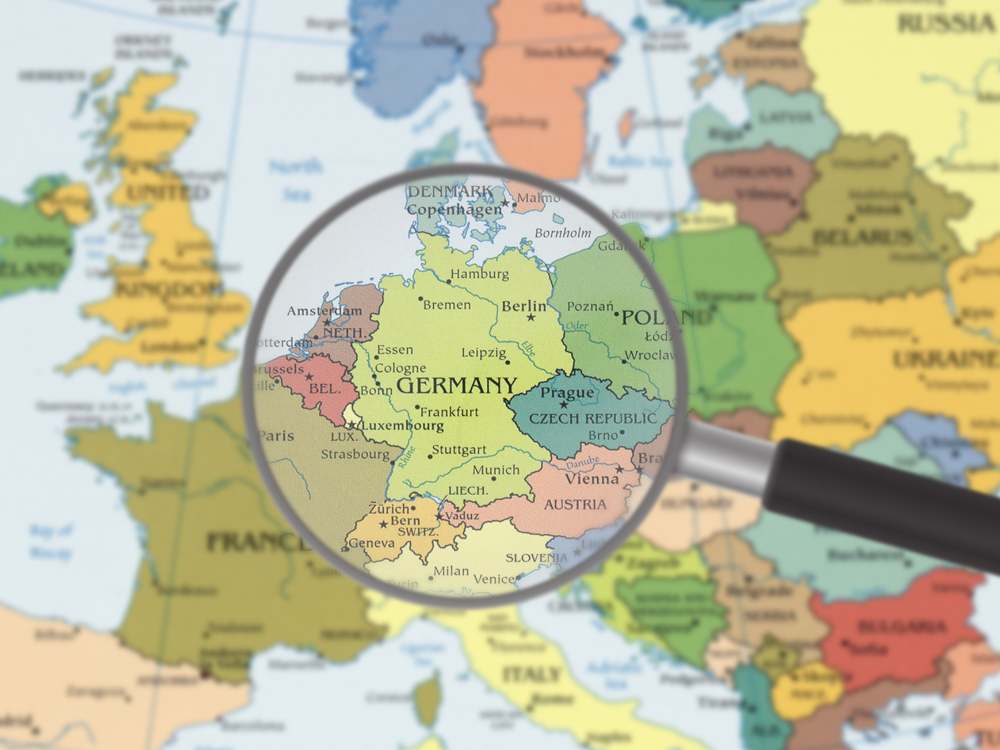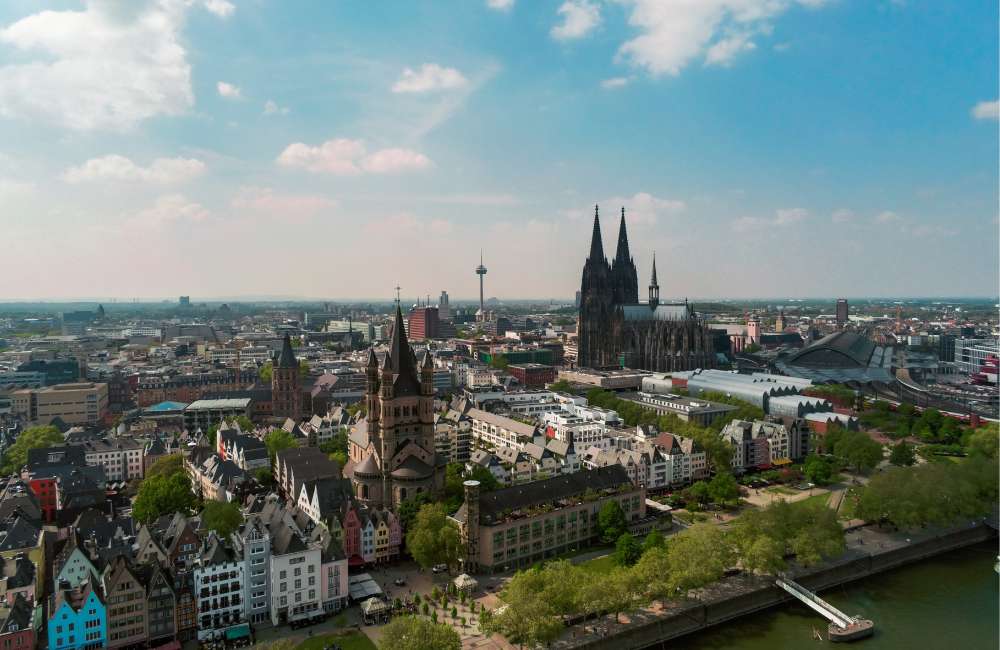Is Germany a Scandinavian Country?
As a German with Danish ancestry, I have often been asked abroad whether Germany is a Scandinavian country.
This question may arise from a lack of familiarity with the geographical and cultural characteristics of Europe. US-Americans especially seem to refer to all of Europe as just “Europe” which can be confusing.
In this post, I aim to examine whether Germany can be regarded as part of Scandinavia.
So let’s gain a deeper understanding of the distinct identities of Germany and the Scandinavian countries
Is Germany a Scandinavian Country?
Are Germans Nordic?
No, Germans are usually not considered to be Nordic. Even though Germans and Nordic peoples share a common ancestry, there are important differences between the two groups that suggest a distinction.
Nordic countries such as Denmark, Sweden and Norway have distinct linguistic, cultural, and political traditions that set them apart from Germany, which has its own unique history and cultural heritage.
Is Germany a Nordic Country?
No, Germany is not considered a Nordic country.
Although Germans and Nordic peoples share a common ancestry, there are significant differences between the two groups. Nordic countries such as Denmark, Sweden, and Norway have unique linguistic, cultural, and political traditions that set them apart from Germany.
Therefore, Germans are usually not regarded as Nordic.

Is Germany Scandinavian?
No, Germany is not Scandinavian. The term Scandinavian specifically refers to the countries of Norway, Sweden, and Denmark. These countries are located on the Scandinavian peninsula in northern Europe.
Germany, on the other hand, is situated in central Europe. It has a distinct cultural and historical identity that is separate from the Scandinavian countries.
While there are cultural and linguistic similarities that link Germans to Scandinavian peoples, Germany has its own unique history, culture, and identity, that distinguish it from the Nordic and Scandinavian countries.
Therefore, it would be more appropriate to describe Germany as a central European country, rather than a Scandinavian one.
Is Germany Nordic or Scandinavian?
Germany is neither Nordic nor Scandinavian.
The term Nordic typically refers to the countries of Denmark, Finland, Iceland, Norway, and Sweden. These countries share a common cultural and historical heritage. Meanwhile, the term Scandinavian specifically refers to the countries of Norway, Sweden, and Denmark, which are located on the Scandinavian peninsula in northern Europe.
Germany, on the other hand, is located in central Europe and has a distinct cultural and historical identity that is separate from the Nordic and Scandinavian countries.
While there are certainly cultural and linguistic influences that connect Germans to Nordic and Scandinavian peoples, such as the shared Germanic language family, Germany has its own unique history, culture, and identity that set it apart from the Nordic and Scandinavian countries.
Therefore, it would be more accurate to describe Germany as a central European country, rather than a Nordic or Scandinavian one.
Are Germans considered Vikings?
No, Germans as a whole cannot be considered Vikings.
The Vikings were a specific group of seafaring warriors from Scandinavia who carried out raids and conquests throughout Europe. Today the term “Viking” has come to be used more broadly to describe people from the Nordic countries.
Even though there may have been some Germans who participated in Viking activities, Germans as a whole cannot be considered Vikings. While there are certainly cultural and linguistic influences that connect Germans to Nordic peoples, Germany has its own unique history and cultural heritage.
Is German similar to Scandinavian?
German and Scandinavian languages belong to the same Germanic language family and exhibit many similarities in vocabulary, grammar, and syntax. However, they also have notable distinctions that set them apart.
For instance, German features three genders, while most Scandinavian languages like Swedish and Norwegian only have two. Moreover, Scandinavian languages have a unique pitch accent absent in German.
Despite the shared linguistic heritage, German and Scandinavian languages are not mutually intelligible.
Although a German speaker may recognize some Scandinavian words and phrases, significant differences in grammar, vocabulary, and pronunciation make it challenging to communicate effectively without prior language study. Similarly, a Scandinavian speaker may recognize some German words and phrases, but differences in grammar and pronunciation can still impede communication.
However, speakers of one language may find it easier to learn another language within the same language family.
Are Danish people similar to Germans?
Danish people and Germans share certain similarities, but they also have notable differences.
Both Denmark and Germany are located in Europe and have a shared cultural and historical heritage.
In terms of physical appearance, there may be some similarities between Danish and German people. Nevertheless, these traits can also vary significantly within each population.
Culturally, both Danish and German societies have a strong tradition of beer brewing, and their cuisines share some similarities. They also have similar attitudes toward work and education, valuing hard work and academic achievement.
However, there are also important differences between the two countries. Danish society tends to be more egalitarian, with a greater emphasis on social welfare programs and income equality. German society – on the other hand – has a stronger tradition of individualism and entrepreneurship.
Additionally, the Danish language is part of the North Germanic language group, while the German language is part of the West Germanic group, resulting in significant differences in vocabulary, grammar, and pronunciation.
Overall, while Danish people and Germans share some cultural and linguistic similarities, they also have unique differences that distinguish them from each other.
Is German understood in Denmark?
German and Danish are both part of the larger Germanic language family. As a result, they share certain linguistic similarities. However, they are not mutually intelligible languages. Understanding German in Denmark can vary depending on the level of exposure to the language.
Many Danes have some familiarity with German due to the close proximity of the two countries and their shared history. German is taught as a second language in Danish schools, and it is also commonly spoken in certain areas of Denmark.
However, while Danes may be able to recognize some German words and phrases, the differences in grammar, vocabulary, and pronunciation can still make communication challenging. Understanding spoken German may be especially difficult for those who have not had extensive exposure to the language.
In conclusion, while there are some linguistic similarities between German and Danish, they are not mutually intelligible languages.. Understanding German in Denmark can be limited depending on individual exposure and language proficiency.
Why is Swedish so similar to German?
Swedish and German are both Germanic languages, which means they share a common ancestor language. This common ancestor language evolved into different dialects, which eventually became separate languages, including Swedish and German.
This is why Swedish and German share a lot of vocabulary and grammar.
Why is Germany not a Scandinavian country?
Germany is not a Scandinavian country because it is not geographically located in Scandinavia.
Scandinavia refers to a region in Northern Europe that includes the countries of Sweden, Norway, and Denmark. These countries share a similar cultural and linguistic heritage and are located on the Scandinavian Peninsula.
Germany, on the other hand, is located further to the south in Central Europe and does not have a direct connection to the Scandinavian Peninsula. It is bordered by countries such as Poland, the Czech Republic, Austria, Switzerland, France, Luxembourg, Belgium, and the Netherlands.
What’s the difference between Germany and the Nordic countries?
Germany and the Nordic countries are two distinct regions of Europe, each with its own unique characteristics and cultural identities. While Germany is situated in central Europe, the Nordic countries are located in the northern part of the continent and consist of Sweden, Norway, Finland, Denmark, and Iceland.
One of the primary differences between Germany and the Nordic countries is language. While German is the official language of Germany, the Nordic countries each have their own official languages.
Another notable difference is geography. Germany has a diverse landscape that includes mountains, forests, and rivers. The Nordic countries are characterized by vast expanses of forests, lakes, and coastlines.
Culturally, there are also differences between Germany and the Nordic countries. Germany has a rich history and has made significant contributions to fields such as science, technology, and the arts. The Nordic countries, on the other hand, are known for their progressive social policies, design, and fashion.
Which country is not Scandinavian?
Norway, Sweden, and Denmark are considered as Scandinavia in a historical and linguistic-cultural sense.
Out of the six Nordic countries, Finland, Iceland, and the Faroe Islands are sometimes considered part of Scandinavia in a broader sense.
Therefore, the countries that are not considered Scandinavian in either a narrow or broad sense are other neighboring countries.
What are the 6 Scandinavian countries?
Norway, Sweden, and Denmark are considered as Scandinavia in a historical and linguistic-cultural sense. Geographically, these countries are located on the Scandinavian Peninsula, where the northwest of Finland is also situated.
Finland, Iceland, and the Faroe Islands are also sometimes included in Scandinavia in a broader sense, meaning the Nordic countries as a whole.
About Germany
Language
German is the official language of Germany. It is also spoken in other parts of Europe, such as Austria, Switzerland, and Liechtenstein.
German is a member of the West Germanic language family, which also includes English and Dutch. It is known for its complex grammar rules and extensive vocabulary.
Currency
The currency used in Germany is the Euroi It is the official currency of 20 of the 27 member states of the European Union.
Germany was one of the founding members of the European Union and adopted the Euro in 2002, replacing the Deutsche Mark. The Euro is used not only in Germany but also in other European countries such as France, Italy, and Spain. It is a widely recognized and stable currency, used in international trade and finance.
Area
Germany is a central European country. It is the seventh-largest country in Europe, covering an area of 357,586 square kilometers.
Germany is bordered by nine European countries.
Population
The country is home to a population of over 83 million people, making it the most populous country in the European Union.
Wrap Up: Is Germany a Scandinavian Country?
So while Germany is NOT a Scandinavian country, it is situated in central Europe, south of the Scandinavian countries.
Germany is bordered by several countries, including Denmark, Switzerland, Austria, and the Czech Republic.
Despite not being a Scandinavian country, Germany has strong ties to the Nordic region. With many Germans having Nordic ancestry and the German language sharing similarities with Scandinavian languages.
Frequently Asked Questions
23 Best Things to Eat at Cologne Christmas Market [Locals Pick]
WONDERING WHAT TO EAT AT COLOGNE CHRISTMAS MARKET? You’ve landed on the right article. I’m…
15 Things to Do in Cologne at Christmas
ARE YOU WONDERING WHAT TO DO IN COLOGNE AT CHRISTMAS? You’ve landed on the right…
20 Unusual Things to do in Cologne Germany
ARE YOU LOOKING FOR UNUSUAL THINGS TO DO IN COLOGNE GERMANY? Then you’re in the…
Best Free Walking Tour Cologne in 2023 [Locals Pick]
LOOKING FOR THE BEST FREE WALKING TOUR IN COLOGNE? You’ve landed on the right article….
Mixed Sauna in Germany – All you need to know
ARE YOU INTERESTED IN GERMAN SAUNA CULTURE? You’ve come to the right place! I’m from…
BEST 5 Stars Hotels in Cologne, Germany
ARE YOU LOOKING FOR THE BEST 5 STARS HOTELS IN COLOGNE GERMANY? You’ve landed on…
- 23 Best Things to Eat at Cologne Christmas Market [Locals Pick] - 18. October 2023
- 15 Things to Do in Cologne at Christmas - 11. October 2023
- 20 Unusual Things to do in Cologne Germany - 6. September 2023











